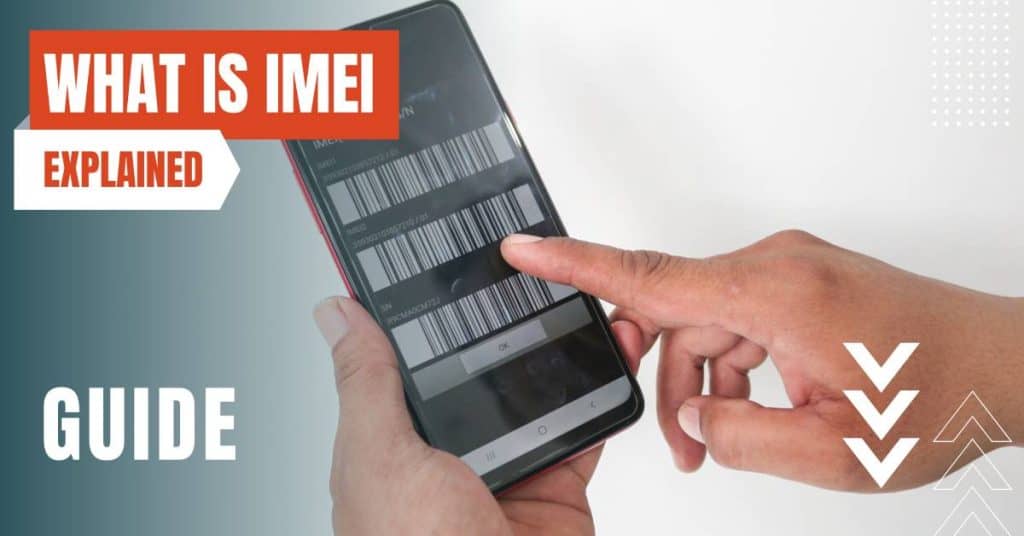All of the products and services we feature are chosen independently. If you click through links we provide, we may earn a commission. Learn more
Written by: Emily Chen
What is IMEI
- Updated: September 30, 2023 | Published:
In today’s digitized world, mobile devices have become an integral part of our daily lives. From managing business transactions to maintaining social relationships, we rely heavily on these devices.
Given their significance, it’s essential to understand key elements about mobile devices, particularly the International Mobile Equipment Identity (IMEI). This unique identifier not only helps in tracking devices but also ensures their network compatibility.
This article delves into the various aspects of IMEI, discussing its role, uses, and potential misuses.

Understanding the Basics of IMEI
The International Mobile Equipment Identity (IMEI) serves as a unique fingerprint for every mobile device worldwide. This 15-digit number is etched into each device during manufacturing, ensuring the exclusivity of the IMEI number to each individual device.
Even in the case of dual SIM slots, two distinctive IMEI numbers are assigned. One exemplary format for an IMEI number may be 490154203237518. Intricate structure of this identifier includes a type allocation code (TAC), a serial number, and an additional spare or check digit.
The TAC is subcategorized into a reporting body identifier and a model identifier, serving to determine the respective body issuing the IMEI and the precise model of the device.
The IMEI Number: A Key Player in Network Compatibility and Device Tracking
The IMEI number stands as a gatekeeper for network compatibility and authorization. Cellular networks, for example, AT&T, Verizon, or T-Mobile, use this unique identifier to verify the device’s compatibility, its binding to a specific carrier, or even its blacklisting status.
Blacklisting occurs when a device, reported stolen, gets its IMEI barred from connecting to any network.
Additionally, the IMEI number also functions as a unique beacon for tracking devices. In the unfortunate event of a lost or stolen device, the IMEI number facilitates reporting to law enforcement and insurance companies, as well as the device’s network carrier, enabling the latter to blacklist the device.
The Necessity for Safe IMEI Storage and Prudent Sharing
The preservation of the IMEI number in a secure location is of vital importance. This could be achieved by writing it down and storing it in a physical safe or a secure digital location.
However, it’s crucial to avoid publicly sharing the IMEI number as it is considered private and confidential.
Unauthorized sharing of this number can lead to unnecessary complications, such as false reporting of device theft, leading to an unwarranted device lockout.
IMEI Numbers in the Domain of Cybersecurity
Despite their utility, IMEI numbers can be a potential tool for hackers. Cybercriminals can utilize this identifier to track individuals or ascertain the phone’s make, model, and specifications.
Armed with this information, they can impersonate the user, execute a SIM swap, or even purchase a new phone under the user’s mobile plan.
This underlines the importance of securely storing and sharing IMEI numbers, as cybercriminals could potentially gain access to your personal calls and messages through your IMEI.
Evaluating IMEI Status Prior to Purchase
When considering a used device, verifying the IMEI status proves indispensable. Various online services, such as IMEI.info or IMEI24.com, provide IMEI checking facilities. These checks disclose whether the device is blacklisted, financed, or still possesses a due balance.
This check safeguards buyers from ending up with a device which might become unusable due to discontinued payments by the original owner.
Legal and Ethical Aspects of IMEI Alteration
Altering the IMEI number of a device is technically achievable, but remains a contentious and generally illegal activity in many regions, including the United States and the United Kingdom. Such changes can stir a host of legal and ethical complications and are strongly discouraged.
For example, criminals could alter the IMEI to mask a stolen phone’s identity, which is a punishable offense, potentially leading to fines or imprisonment.
The Procedure for Locating Your IMEI
The IMEI number can be easily located within the device settings or physically on the device. Dialing *#06# on most devices presents the IMEI number on the screen.
Alternatively, the IMEI number may be imprinted on the device’s back or beneath the battery. In cases of devices with removable batteries, the IMEI can be accessed after battery removal. For iPhones, the ‘About’ section in the settings houses the IMEI number.
Ensuring the legitimacy of the IMEI before and after purchase helps avoid scams, verifying the device advertised is the device purchased. For instance, when buying a used phone online, requesting the IMEI number from the seller and confirming it with an online IMEI checker adds a layer of security to your purchase.
In essence, the International Mobile Equipment Identity (IMEI) serves a vital role in our digitally interconnected world, playing a key role in mobile device tracking, network compatibility, and cybersecurity.
It’s paramount to handle this unique identifier with utmost care, given its potential for misuse and the vital role it plays in mobile device functioning.
Whether you’re a mobile device user, a buyer of used devices, or a cybersecurity enthusiast, understanding the nuances of IMEI is invaluable in enhancing your digital safety and mobile device experiences.
By entering your email & signing up, you agree to receive promotional emails on eSIMs and insider tips. You can unsubscribe or withdraw your consent at any time.

About The Author
Spread the Word, Share the Joy
Compare eSIMs
Why keep the secret to yourself? Spread the joy of eSIMradar and let everyone in on the eSIM experience!

Easy eSIM Comparison for Your Needs
Simplifying your search! Easily compare eSIM plans tailored to your specific needs

Coverage in 210+ Countries
Benefit from our extensive eSIM comparison with 30+ providers in over 210 destinations.

Save money without second-guessing
Our platform helps you maximize value, ensuring competitive prices.

Enjoy Hassle-Free Travel Abroad
Whether you’re on holiday or a business trip abroad, stay connected with ease and focus on enjoying your experiences,
Find Your Perfect eSIM & Exclusive Deals!
Find your ideal eSIM effortlessly and stay connected in style wherever your adventures take you! Get exclusive deals and discounts at your fingertips, ensuring you get connected for less on your travels!













